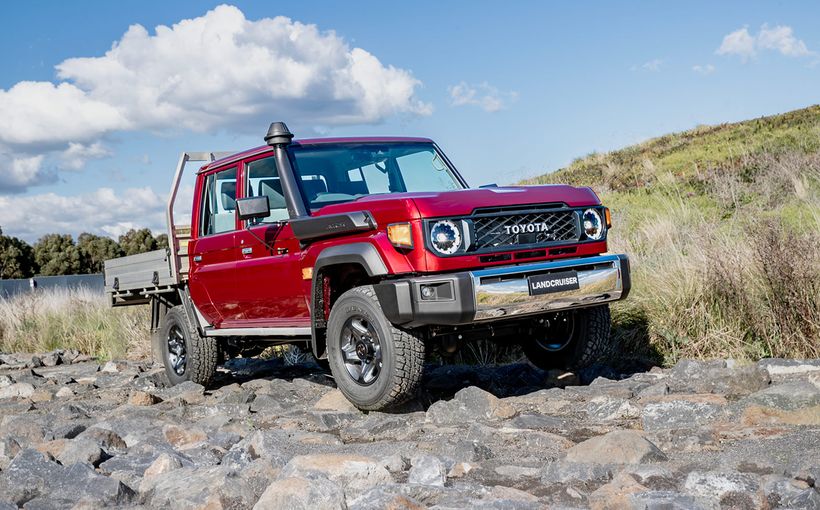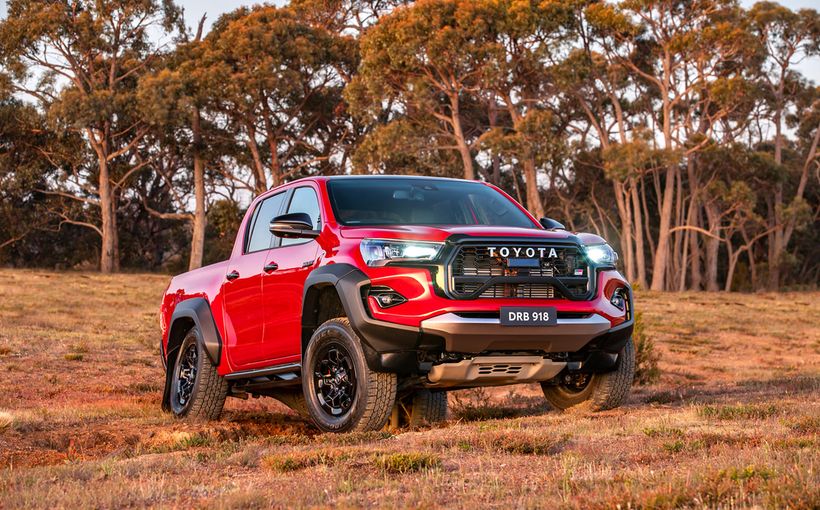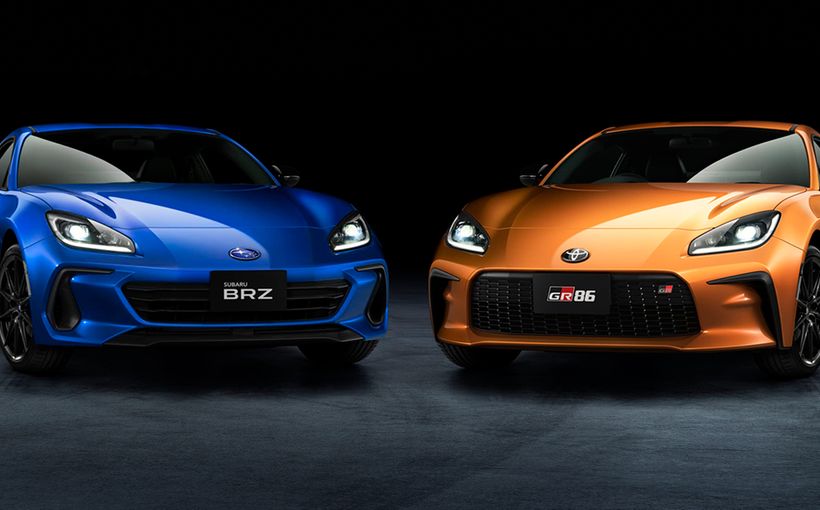Toyota Corolla AE86 Sprinter: A Runaway Winner!

The AE86 Corolla Sprinter - one of the world’s last rear wheel-drive small cars - was in production for only five years, yet in that time proved to be one of the world’s best Group A touring cars with many victories across the globe including the UK, Europe and Australia.
Arguably its greatest achievement was winning the manufacturer’s title in the 1986 European Touring Car Championship. Numerous teams raced AE86 Sprinters in the small car class that year and the big-hearted 1.6 litre pocket rocket almost swept all before it, winning its class in 12 of the 14 rounds.
This giant-killing performance claimed prized scalps including the BMW 635 CSi, Rover Vitesse, Volvo 240 Turbo and Holden VK Commodore to name a few.
The AE86’s European trophy haul also included multiple victories in the prestigious Spa 24 Hour race in Belgium. From its debut in 1984 to its final appearance in 1989, the unbreakable Sprinter won its class an incredible five times from six starts and finished runner-up in the other. It also claimed consecutive driver’s championships in the British Touring Car Championship in 1986-87.
And in Australia, the EA86 dominated Group A’s small car class, thanks to the efforts of local works team Toyota Team Australia (TTA) and prominent privateers like evergreen veteran Bob Holden. TTA Sprinters scored numerous wins in the Australian Touring Car Championship, Australian Endurance Championship and Australian Manufacturers Championship which included several Bathurst 1000 class victories - which on one occasion also cracked the outright top 10.

The AE86 name was simply derived from Toyota’s in-house RWD chassis codes for its fifth generation Corolla, with A denoting the engine (4A series), E (Corolla), 8 (E80 series) and 6 (sixth variant). The ‘Sprinter’ name, which describes sporty Corolla variants, started with the original E10 series Corolla in 1968.
So what made the AE86 Sprinter such a successful Group A touring car? Its excellent weight distribution, light 950-970kg kerb weight and rear wheel-drive was a good start, at a time when most small passenger cars were changing over to front wheel-drive.
Available in a choice of two-door coupe or three-door hatchback body styles and fixed (Levin model) or retractable (Trueno model) headlights, its well-sorted MacPherson strut front suspension, four-link coil-sprung live rear axle and anti-sway bars blessed the AE86 with sublime handling that was ideally suited to competition use.
Lower-spec export models (including Australia) were fitted with the 1.6 litre 4A-C SOHC engine, 6.4-inch diff and rear drum brakes. However, the Japanese/European version that raced in Group A was equipped with the top-shelf 4A-GE fuel-injected twin-cam with T-VIS (Toyota Variable Intake System) rated at 96kW (128bhp) and 150Nm (110ft/lbs), plus the larger and stronger 6.7-inch LSD and four-wheel disc brakes.
TTA campaigned three AE86 Sprinters between 1984 and 1989 before they were replaced across the board by front wheel-drive AE82 hatchbacks. All three Sprinters were built by Toyota Motor Corporation in Japan under the giant’s competition arm TRD (Toyota Racing Development).

1984: A Taste Of Things to Come
TTA (Car 1) AE86 Hatchback
The first AE86 Sprinter raced by TTA was a three-door hatchback shipped from TRD in 1984, which was the last year of Australia’s home-grown Group C touring car rules. The new AE86 was a factory race car built to comply with international Group A regulations used in Europe since 1982, which Australia was to adopt in 1985.
To give local fans their first look at this new breed of touring cars, Bathurst 1000 race organisers included a Group A class alongside the Group C cars in their final Bathurst appearance. TTA took advantage of this opportunity to give the new Sprinter a pre-season shakedown at Mount Panorama, with the fast and experienced driver pairing of John Smith/Stephen Brook.
The new AE86 showed immediate potential in practice to qualify ninth fastest out of the 14 Group A cars and fastest 1600cc, headed only by more powerful Rover Vitesse, Ford Mustang, BMW 635 CSi, Alfa GTV6 and turbocharged Mitsubishi Starion rivals. Unfortunately the Sprinter retired after 110 of 163 laps with oil pump failure, but the potential was there for a great 1985 season.

1985: A Perfect Score
TTA (Car 1) AE86 Hatchback TTA (Car 2) AE86 Coupe
Grid sizes were quite small in the early rounds of the 1985 ATCC as many non-factory teams struggled with the considerable financial and logistical challenges of updating cars and equipment to comply with the new Group A rules.
TTA was one of several factory-backed teams ready to go from round one with Toyota dealer and lead driver John Smith (Car 1) stringing together four consecutive 1600cc class wins at Winton, Sandown, Symmons Plains and Wanneroo.
A second TRD-built AE86 Sprinter joined the ATCC battle from round five at Adelaide. Unlike Car 1’s hatchback body style, Car 2 was a two-door coupe, but the change had no effect on TTA’s stunning results with Smith snapping up another five consecutive class wins at Adelaide, Calder, Surfers Paradise, Lakeside and Amaroo Park.

Smith’s team-mate Drew Price drove Car 1 to another class victory at Oran Park’s final round to give Toyota and the AE86 Sprinter a perfect score of 10 wins from 10 rounds in its debut season. Not only that, Smith finished seventh in the overall championship points tally, beaten only by cars with much larger engine capacities and/or power outputs.
TTA’s stunning success continued in the five-round Australian Endurance Championship (AEC) which ran concurrently with the Australian Manufacturers Championship (AMC). With their relentless pace and rock-solid reliability ‘Smithy’ and Car 2 claimed class victories in the Better Brakes 300 at Amaroo, Pepsi 250 at Oran Park and the Surfers Paradise 300, while team-mates John Faulkner/Ray Cutchie (Car 1) sealed up the Sandown 500.
The icing on the TTA cake was at Bathurst, with Smith/Price in Car 2 claiming another emphatic victory. Toyota won the 2.0 litre class and finished fourth overall in the AMC and AEC, again beaten only by outright contenders.

1986: The Small Car King
TTA Car 2 AE86 coupe TTA Car 3 AE86 coupe
After such a hugely successful debut, TTA had real momentum as it headed into 1986 with the original AE86 hatchback (Car 1) having been sold and two new twin-cam Corollas destined to join Car 2 (AE86 GT coupe) during the season.
1986 was also the first year of the short-lived Australian 2.0 Litre Touring Car Championship. Held over five rounds, it was introduced by the sport’s governing body CAMS largely in recognition of Toyota Australia’s substantial commitment and a desire to provide it with a national championship it could realistically win. CAMS also hoped this newly elevated status for small cars would entice other manufacturers to take on Toyota.
TTA was a no-show at Amaroo Park’s ATCC opener but Smith powered to his first 1986 class victory in Car 2 at Symmons Plains’ second round. Sandown’s following ATCC clash saw the first 2.0 litre championship round run as a separate race. Drew Price was a rare non-finisher in Car 2 while team leader Smith claimed victory in his evaluation of an AE82 Corolla; the first FWD Corolla powered by the same potent 4A-GE 1600cc twin-cam engine as the RWD AE86 in a compact three-door hatchback body.

With torque steer contained, the AE82 had potential and several examples would soon become permanent members of the TTA stable. FWD was also the Corolla’s mainstream production future worldwide, but to Toyota Australia’s and TTA’s credit they continued fielding both FWD and RWD models as it reflected the choice available to Corolla buyers until 1987.
Smith switched to the RWD Car 2 to claim another class win at the ATCC’s fourth round in Adelaide, which unlike Sandown incorporated the second 2.0 litre championship round within the main ATCC race. Price finished third in the new FWD car.
TTA skipped the fifth and sixth ATCC rounds as they were not concurrent 2.0 litre championship events but re-joined the battle at Calder which was also round three of the 2.0 litre title. Here TTA rolled out its third and final AE86 Sprinter (Car 3), another pristine TRD-built two door coupe, which Smith drove to a sparkling debut victory with Price second in Car 2.
TTA also skipped the eighth and ninth ATCC rounds for the same reasons but Smith returned in fine style for the Oran Park final which incorporated the fourth round of the 2.0 litre series. Smith and Car 3 claimed another class victory before winning the final stand-alone round at Lakeside two weeks later. Another clean-sweep for TTA, winning the inaugural Australian 2.0 Litre Touring Car Championship with a perfect score of five wins from five rounds – four by the AE86 Sprinter.

The class wins kept coming for the Sprinters in the six rounds of the concurrent AMC and EAC titles with Smith (Car 3) winning the Better Brakes 300 at Amaroo Park while John Faulkner/Mike Quinn (Car 2) won their class at both the Sandown 500 and (after a crash in practice) the Bathurst 1000. Smith also drove the new FWD AE82 (Car 4) to victory at the Surfers Paradise 300 to give TTA four wins from four starts.
However, at Calder Park’s 300km round five, Toyota had its first taste of serious competition. Privateer John Giddings in a RWD Nissan Gazelle hatchback (aka Silvia RS), powered by Nissan’s potent FJ20E 1990cc twin-cam engine, set a new benchmark for the 2.0 litre division which the smaller-engined 1600cc Corollas would struggle to match.
Giddings finished two laps ahead of Price (Car 2) and Smith (Car 3) at Calder and won again at the Pepsi 300 final at Oran Park, where both TTA Sprinters failed to finish. Even so, Toyota won the 2.0 litre class in both the AMC and AEC for the second year in a row.

1987: A Gazelle Gets The Jump
TTA Car 2 AE86 coupe TTA Car 3 AE86 coupe
After two years of dominance, to say TTA’s third season was character-building would be an understatement. Although the team’s new AE82 (Car 4) had won at Surfers on debut the previous year, the FWD hatchback was destined to play a supporting role in 1987 as TTA focused on its AE86 Sprinters.
This was triggered by a formal challenge from Nissan’s local works team Gibson Motor Sport with a 2.0 litre Gazelle driven by a 19-year-old kid called Mark Skaife. Gibson was already committed to a youth development program with Glenn Seton, so blooding Skaife in the small car class with the goal of winning the Australian 2.0 litre Touring Car Championship was a risk worth taking.
However, due to insufficient promoter support, the Toyota vs Nissan 2.0 litre clash was reduced from a planned six rounds to four with stand-alone events at Winton, Lakeside and Amaroo plus one combined with the ATCC round at Sandown. Although Smith won the opener at Winton, Skaife hit back with three consecutive victories to claim the championship and continue his rise to the top with Gibson in the years to come.

Toyota’s Corollas simply could not match the extra grunt of their Nissan rival in the 2.0 litre championship. And TTA’s results in the 1987 ATCC overall, which confusingly now also ran concurrently with the AMC, were affected by several missed rounds and revision of the class structures into Over 2.5 litre and Under 2.5 litre divisions.
This unfairly put the 1.6 litre Corolla in the same class as the demonstrably faster 2.3 litre BMW M3, with which Jim Richards would win the championship outright. The TTA Corollas also suffered numerous uncharacteristic retirements in the endurance races, with the only bright spot being second in class for Smith/Price (Car 3) at the Sandown 500.
The endurance season also hosted two local rounds of the ill-fated World Touring Car Championship. The first leg - the Bathurst 1000 - was a disaster for TTA with both of its cars crashing heavily on top of the Mountain after a sudden downpour. The second 500km leg at Calder a week later ended with a broken axle for the lone Faulkner/Quinn AE86. Toyota finished a lowly sixth in the AMC.

1988: Sprinter Still A Contender
TTA Car 2 AE86 coupe TTA Car 3 AE86 coupe
By 1988 the incentives for manufacturers of small cars to compete in the ATCC were negligible. Given the lack of promoter and media interest in supporting a stand-alone 2.0 litre championship, CAMS abandoned the concept of multi-class racing in favour of the ATCC simply awarding points from outright first to 10th place in each race. As a result a Corolla did not score a single point!
However, although Nissan had shelved its Gazelle program after one season, TTA continued to fly the Toyota flag in 1988 with multiple entries. Why? The kudos of being the first 1600cc car home at each round plus a realistic chance of winning the concurrent Australian Manufacturers Championship, following the reinstatement of a three-class structure (including up to 2000cc) which would again reward class-winning consistency.

Although the AE86 had ceased production in 1987, the two TTA Sprinters regained their place as the small car benchmark with Smith (Car 3) being first 1600cc car home at Calder’s opening round. The same Sprinter with different drivers also topped the tiddlers at Adelaide, Amaroo and the Oran Park finale. The FWD AE82s top-scored in the other five rounds, to give TTA another perfect score and its first manufacturers title - albeit shared with equal point-scorers Ford and BMW.
TTA’s endurance race outings were reduced to just the Sandown 500 (in which all three entries failed to finish) and the Bathurst 1000, which sadly would be the last for the AE86 coupes. Even so, TTA sent the mighty Sprinter out in winning style, with Price and Faulkner driving the wheels off Car 3 to not only win the 1600cc class by a full lap but also finish an amazing ninth outright.

1989: A Final Crucial Win
TTA Car 3 AE86 coupe
Although TTA would continue to race its rapid FWD AE82 Corollas and an uncompetitive MA70 Turbo Supra until 1992, 1989 was the final year for the team’s trusty RWD AE86 Sprinters which had brought Toyota Australia so much success.
Even so, the last of the Sprinters (Car 3) was only required on two occasions, with the second and last outing at the Oran Park ATCC final proving pivotal. In the hands of John Smith, it finished 22nd outright but - most importantly - also first in the concurrent AMC class points for the 2.0 litre division. This allowed Toyota to clinch another Australian Manufacturer’s Championship - and all to itself this time. What a curtain call!
With such a phenomenal winning record in touring car racing, the deep respect which the AE86 Sprinter commands today within racing circles and the booming Japanese car scene in Australia and around the world is clearly justified.
Indeed the high esteem in which it is held was the inspiration for Toyota’s new millennium reincarnation with the RWD 2.0 litre Toyota 86 sports car, which also has established a fanatical following. Clearly those two digits 8 and 6 are more than just numbers in Toyota-speak. They are legends.
*Special thanks to Chris O'Connor for his valuable assistance with this story.









